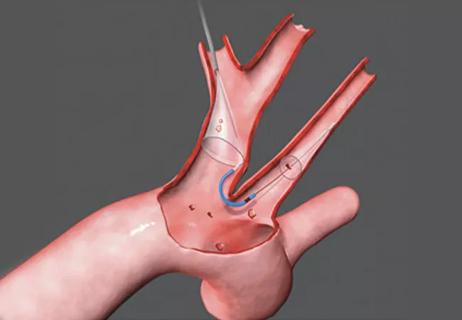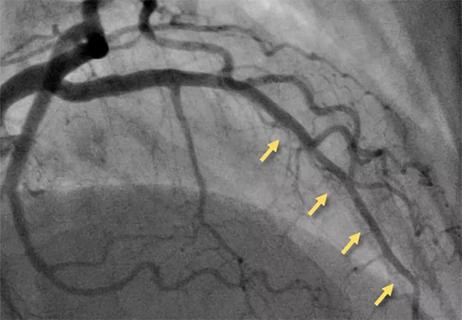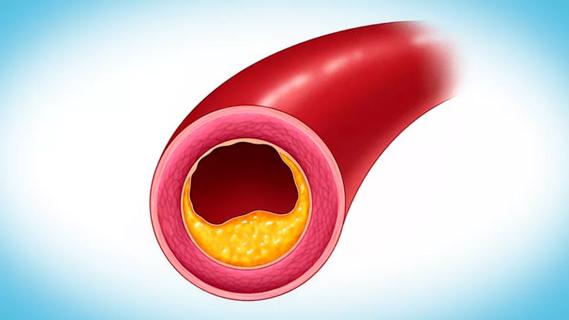What to do when a patient’s ischemia is not due to coronary artery stenosis
Ischemia with non-obstructive coronary arteries (INOCA) is an increasingly recognized entity involving microvasculature dysfunction and/or vasospasm of the coronary arteries. Because the diagnosis requires specialized expertise and testing, it is frequently missed. But leaving it undiagnosed puts the patient in peril, as INOCA is associated with repeated emergency department visits and hospital admissions, as well as increased incidence of cardiovascular events and death.
Advertisement
Cleveland Clinic is a non-profit academic medical center. Advertising on our site helps support our mission. We do not endorse non-Cleveland Clinic products or services. Policy
These characteristics have made INOCA an area of great interest for Cleveland Clinic interventional cardiologists Khaled Ziada, MD, and Claire Raphael, MD, PhD.
“Despite poor awareness of INOCA, we now know it is not rare, and that makes it an important topic,” says Dr. Ziada. “Fortunately, we are gaining a better understanding of its mechanisms and how to diagnose and manage it.”
Studies show that more than 50% of patients undergoing invasive angiography — particularly women — do not have obstructive coronary artery disease, with many of them having INOCA.
“I’ve seen many patients who are so grateful for a diagnosis of INOCA after having had their angina symptoms repeatedly dismissed by doctors,” says Dr. Raphael. “Just knowing that their condition is a real entity is a tremendous relief and allows patients to move forward with management.”
Like angina caused by stenosis of the larger coronary arteries, INOCA involves a supply-demand mismatch of myocardial oxygen. Two major mechanisms — microvascular dysfunction and vasospastic disorders — have been identified, as detailed below and illustrated in the figure.
Microvascular dysfunction involves small vessels that supply the myocardium but cannot be seen angiographically. The pathophysiology may be related to vasomotor dysregulation and structural remodeling of the arterioles.
So-called microvascular angina (MVA) is more common in women, especially during middle age. Risk factors are similar to those for atherosclerosis and include smoking, hypertension and dyslipidemia.
Advertisement
PET and MRI criteria have been established for the diagnosis of MVA, but they are not always reliable. Better diagnostic measurements can be performed in the catheterization laboratory: reduced coronary flow reserve and reduced blood flow velocities (using index of microvascular resistance testing) are indicative of MVA and predictive of elevated risk of cardiovascular events and death.
Vasospastic disorders involve spasm of coronary arteries. Hyperreactive smooth muscle cells and dysfunctional endothelium are likely underlying mechanisms. Vasospasm can be transient (causing Prinzmetal angina) or persistent, leading to myocardial infarction.
Vasospastic angina (VSA) more commonly occurs in Asians and men, with smoking being a major risk factor. It can be diagnosed in the catheterization lab, with provocative testing using intracoronary acetylcholine and/or IV ergonovine.
These two INOCA endotypes — MVA and VSA — may overlap, which is associated with a worse prognosis.
“The key is to think about INOCA when we see patients who present with angina but have little or no evidence of plaque in their coronary arteries,” says Dr. Ziada. “Appropriate testing can be done at the same time that we perform angiography.”

Patients with INOCA need therapy to alleviate their angina symptoms and to address long-term risk of cardiac events. Neither MVA nor VSA can be treated with stents or bypass. Dr. Ziada offers the following guidance on various aspects of management:
Advertisement
Dr. Raphael notes that research is underway on many aspects of INOCA diagnosis and treatment. The large WARRIOR trial (Women’s Ischemia Trial to Reduce Events in Nonobstructive Coronary Artery Disease) is enrolling more than 4,000 patients at multiple sites to assess the impact of intensive medical treatment (high-dose statin, moderate-dose ACE inhibitor, angiotensin II receptor blocker) on death, myocardial infarction, stroke and hospitalization. Participants will be followed for three years, with results expected in 2024.
She is particularly excited about two promising avenues of innovative treatment:
Advertisement
“Our understanding of INOCA is growing quickly, as is physician awareness,” Dr. Raphael observes. “I am hopeful that it will soon be a well-recognized condition with effective therapy options.”
Advertisement
Advertisement

International experts provide a guide for rapid decision-making focused on transcatheter options

In the wake of NOTION-3 findings, a strong argument for physician judgment remains

TRISCEND II trial reports 1-year results

Post hoc analysis of PROTECTED TAVR finds reduced stroke risk in the U.S. but not beyond

SCAI document focuses on technical aspects of care where clear guidance had been lacking

Novel approach outperforms standard of care for post-PVI stenosis and occlusion

Resourceful approaches to the care of patients with microvascular disease and elevated Lp(a)

Support for a TAVR-first approach in patients with concurrent valve and coronary disease